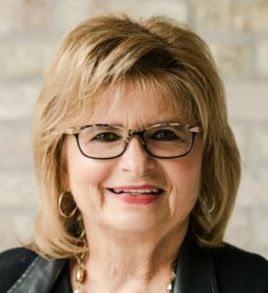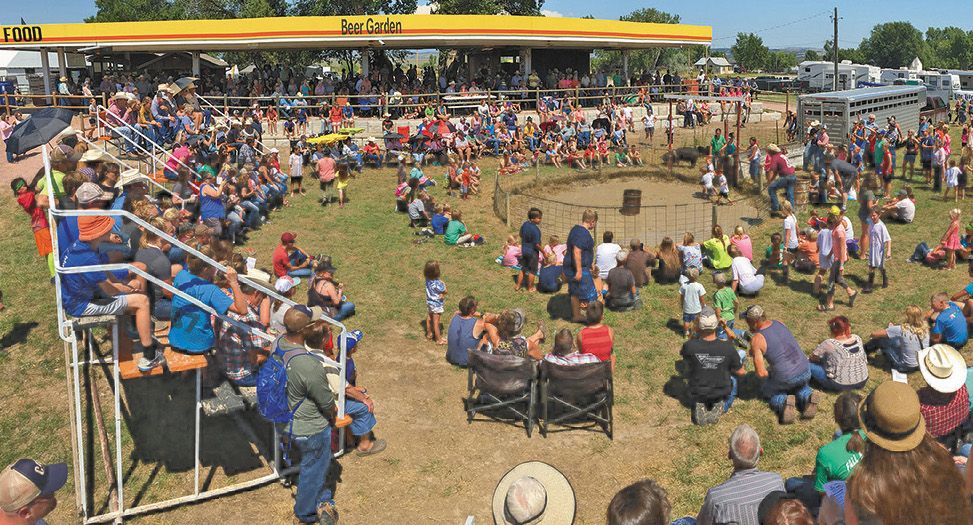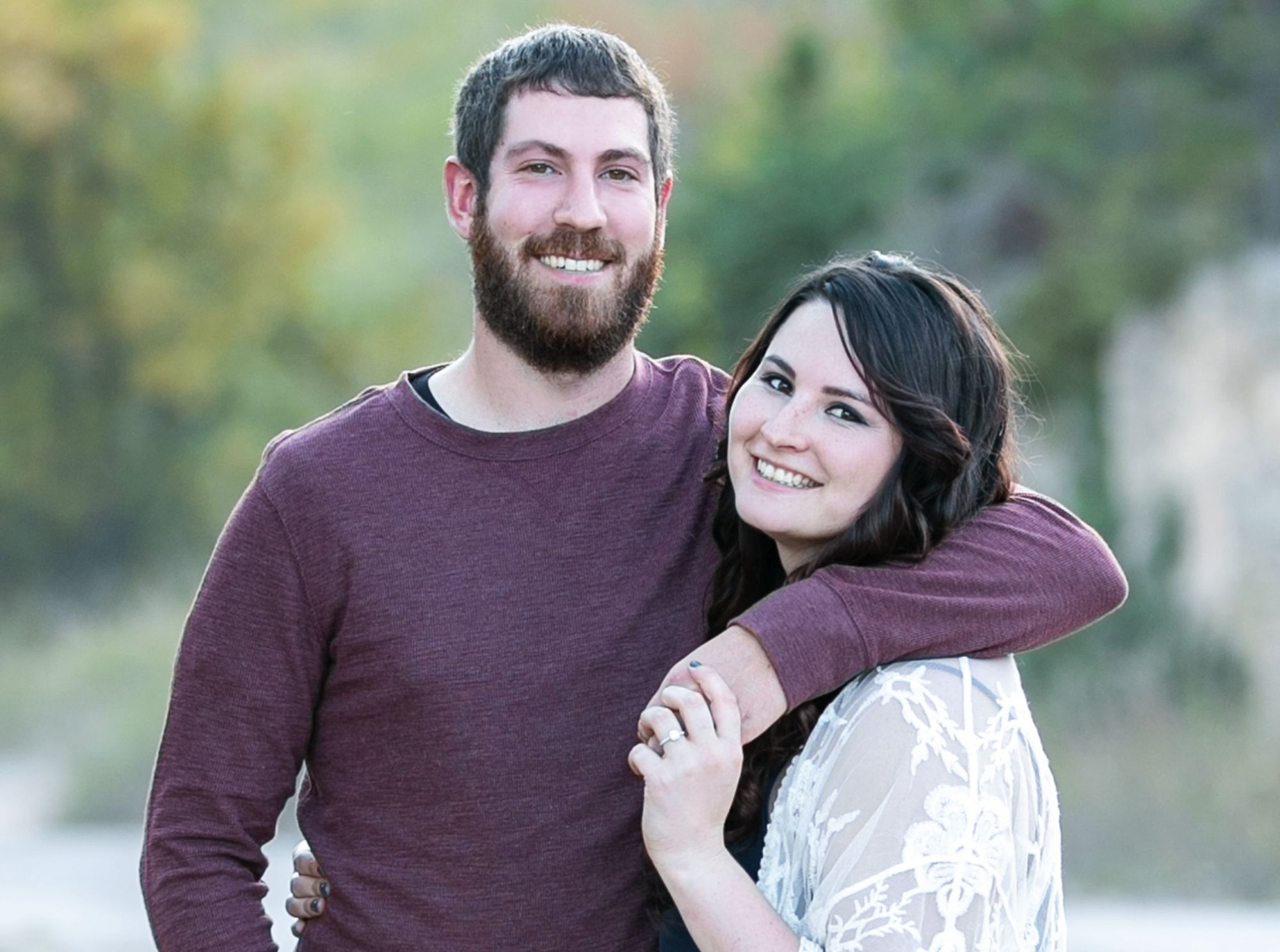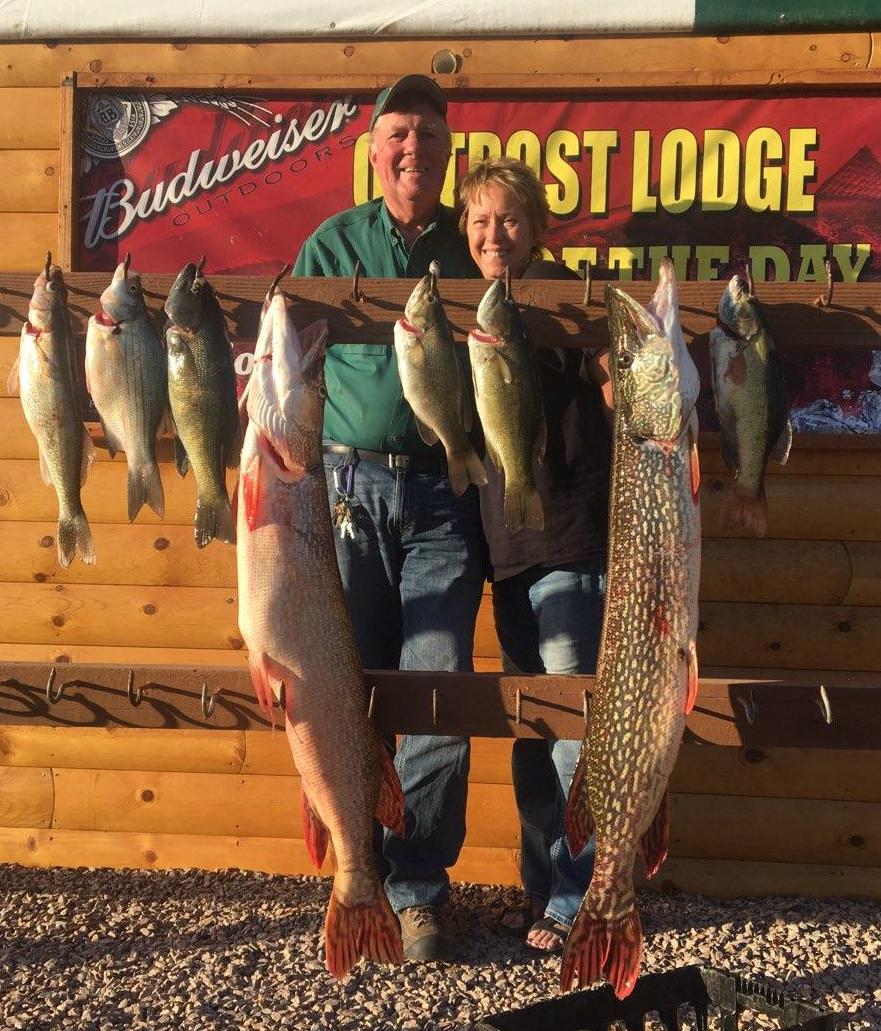South Dakota tourism officials and operators are happy to see a tough 2020 in the rearview mirror, and even happier to look forward to what could be a banner year for visitors and spending in 2021.
Aside from some pockets of unexpected prosperity in 2020 — in tourist activities focused on the outdoors and at accommodations located in wide-open or wilderness settings — the South Dakota tourism industry suffered significant reductions in visitors and revenues last year.
The state saw about 12.6 million visitors to the state in 2020, a decrease of 13% over 2019, and spending by tourists is estimated at $3.4 billion in 2020, a drop of 18% or about $700 million over the prior year.
Early in the pandemic, the tourism industry shed about 15,000 jobs due to a decline in tourist visits, said South Dakota Secretary of Tourism James Hagen. Arrivals at airports in Sioux Falls and Rapid City fell by 48% to only 408,000 in 2020, he said.
Yet tourism officials and operators in South Dakota and elsewhere are almost certain the worst is behind them.
Recent surveys appear to indicate that losses suffered in the pandemic-plagued 2020 tourism season will be offset by a spike in the number of new and returning visitors in 2021 and a sizable increase in the amount of money they will spend in South Dakota.
A rise in vaccinations against coronavirus, a falling number of COVID-19 cases and a simmering desire among tourists to travel after a year many stayed home are expected to converge and result in a potentially record-setting year for tourism in South Dakota.
“From every indicator we’re looking at, every survey that’s been done, 2021 is shaping up to be a strong year when it comes to travel and tourism,” said Hagen. “There’s no question that there is a ton of pent up demand and people are ready to travel.”

“2021 is shaping up to be a strong year when it comes to travel and tourism ... there’s no question that there is a ton of pent up demand and people are ready to travel.” -- James Hagen, South Dakota Secretary of Tourism
South Dakota ranked third best in domestic bookings in 2020 and fared better than most of the nation, which saw tourism spending fall by 45% during the year.
A state-sponsored questionnaire posed to residents in neighboring states shows that July 2021 will be a particularly busy month for tourism in South Dakota, and much of the travel will be done by families, Hagen said.
Recent national surveys have shown that 84% of Americans say they plan to travel within the next six months, that 39% are planning a vacation of a week or more, and that the top six destinations will be large metro areas, small towns or rural areas, beaches, state or regional parks, national parks and mountain settings.
“Of the top six, South Dakota checks four of those boxes, which is outstanding for us,” Hagen said.
One key indicator of visitor interest in the state, visits to the website travelsouthdakota.com, has shown a 45% jump in site traffic in 2021 compared with 2020, and a similar rise in visits compared with 2019.
Hagen said the state tourism industry shed more than 15,000 jobs, or about 35% of its workforce, during the early stages of the pandemic in the spring of 2020. But after Memorial Day, tourism picked back up and most of those lost jobs returned, he said.
Still, “there’s no question some businesses were lost for good,” he said.
Hagen said people in the tourism industry learned several lessons from the pandemic, which he hopes will remain top of mind moving forward.
Businesses must remain vigilant and plan ahead in case another pandemic or other major industry interruption occurs by making sure financials are in order, he said. In addition, he said the pandemic revealed the importance for businesses and employees to focus on maintaining high standards of cleanliness and hygiene to make guests feel comfortable and safe.
“Visitors are going to expect a certain level of safety from here on out, and I don’t think that’s a bad thing,” he said.
Despite the dips in visits and spending, industry officials say 2020 could have been much worse, and note that South Dakota did much better in tourism than most other U.S. states.
Hagen and others credit the strong showing in part to the decision by Gov. Kristi Noem not to enact a statewide mask mandate or require business closures during the pandemic, and a coordinated “open for business” advertising campaign to attract visitors from other states to South Dakota.
Hagen said he does not believe that the efforts to encourage tourists to visit South Dakota during the pandemic caused or exacerbated spikes in COVID-19 cases in the state, which at times led the nation in per-capita infections and deaths in 2020.
“I don’t necessarily agree that it was visitors spreading Covid,” Hagen said. “The whole Midwest was having a wave of cases at times, and different parts of the country were hitting that wave at different points.”
Hagen said the industry’s approach was to welcome visitors but then ensure they felt safe once they arrived.
“We said, ‘We’re open,’ so now we have the responsibility of taking care of these visitors and making sure we have those health and hygiene protocols in place,” he said.
Data points: The hurtful and the hopeful
South Dakota fared better than most other states for tourism visits and spending in 2020, but the COVID-19 pandemic still took a major toll on the industry in the state. Looking ahead, many signs point to a rebound.
A tough year in the rearview mirror…
— 13%, the decline in visitors to South Dakota in 2020 compared to 2019 (12.6 million visitors in 2020)
— 18%, the decline in visitor spending in 2020 ($3.4 billion spent in 2020)
— 35%, the decline in tourism jobs in South Dakota at one point during 2020 (about 15,000 jobs lost)
— 48%, the decline in airport arrivals in Sioux Falls and Rapid City (about 408,000 arrivals)
A recipe for a rebound…
— 84% of Americans say they plan to travel in the next six months
— 58% of American tourists believe it will be safe to travel over the next six months
— 44% of American travelers plan to travel more in 2021 compared to 2020
— 57% increase in online searches related to South Dakota tourism in first three months of 2021
— 14% rise in tourists requesting materials about visiting South Dakota so far in 2021 compared to 2020
— “Excited” is the word most Americans use when considering travel in 2021
Source: South Dakota Department of Tourism
One state, two different outcomes
The potential loss in tourism dollars was undoubtedly offset largely by the nature of South Dakota itself, with its spread-out population, its myriad outdoorsy recreational activities and strong stock of accommodations that allowed for easy social distancing.
As a result, a significant disparity in number of visitors and tourism spending in 2020 showed up in data from the eastern half of the state compared with the west.
The shift to outdoor activities amid the pandemic led 2 million people to visit Custer State Park in 2020, setting a new attendance record. Visits to state parks overall jumped by 31% over 2019 to about 8 million visitors in 2020.
But with a tourism economy based more on conventions, hotel stays and large music and entertainment events that did not allow for social distancing, the Sioux Falls tourism industry saw a 40% decline in spending in the local market in 2020 over 2019, compared with only a 10% decline in spending in the Black Hills & Badlands region.
Teri Schmidt, executive director of Experience Sioux Falls, the city’s tourism-promotion agency, said she did not yet have final figures for 2020 but noted that at one point early in the pandemic the city saw a drop in tourism revenues of 46% over the prior year.
Many big events were canceled outright in 2020, she said.
“It was millions and millions of dollars in economic loss, we do know that,” she said.

Schmidt said her group, funded by a tax on nightly hotel stays, had to cut $900,000 from its budget in 2020, leading to one position cut, elimination of some marketing programs and other spending reductions that included dropping office janitorial services. The agency did receive some funding assistance from the state and city to offset losses, Schmidt said.

Sioux Falls businesses did see an unexpected bump in tourism spending during 2020 after families and groups of friends came to the city to escape strict mask mandates in neighboring Minnesota, Schmidt said.
The city also received a boost when a few groups that typically held events in states that were locked down due to the pandemic moved events to eastern South Dakota, including from New York, Michigan and Arizona, Schmidt said. She thinks it is unlikely those will become permanent additions to the Sioux Falls market, however.
Yet Schmidt has seen signs of optimism, including the planned return of many local festivals and new arrivals such as a youth wrestling tournament that relocated from Minnesota and will bring nearly 5,000 new visitors to Sioux Falls in April.
“We really want to be excited and we are excited, but we’re cautious because it’s been such a tough year,” Schmidt said. “All indications are that we know people are shopping and planning; now we’ve just got to see them come.”
Schmidt said tourism officials across the state remain cautious that the pandemic or some other interruption could again upset their industry.
“If a variant would take over, then what?” she said. “We’re trying to be very realistic about what could yet happen, while at the same time, we’re really excited.”
Michelle Thomson, president and CEO of the Black Hills & Badlands Tourism Association, also expresses great optimism that 2021 will be a bounce-back year.
Thomson said the tourism industry in West River fared better than much of the state and most of the nation in 2020.
Anchored by outdoor activities that allowed for social distancing, estimated visitor spending in the group’s footprint that includes much of West River and part of eastern Wyoming in 2020 was down about 10%, from $1.48 billion in 2019 to $1.33 billion last year. Taxable sales in the tourism industry in the region fell to about $400 million in 2020, a 10% decrease from 2019.
Hotel occupancy took a bigger hit, falling 16.4% in the group’s coverage area.
Like other tourism officials in South Dakota, Thomson said the drop-off could have been more severe.
“Overall we were very happy we were not down nearly as much as other areas of the country,” Thomson said. “We had sectors of the tourism industry that did really, really well because we have so many outdoor activities and wide-open spaces, and those were the sort of things people were really looking for in 2020.”
Thomson also credited the national media coverage about South Dakota being open for business and not having a mask mandate with attracting interest and visits by tourists from other states, including atypical sources such as New York, New Jersey and California. She hopes the momentum created among that new set of visitors will carry over into the upcoming season.
“From the very start of the pandemic, we started getting calls from visitors wanting to come and experience South Dakota because of the freedom we were able to have here,” Thomson said. “We had people looking at South Dakota who maybe would have never looked at us before.”

Attracted to the outdoors
Many hotels and restaurants across South Dakota suffered big losses in 2020 as tourists avoided indoor spaces where COVID-19 can spread.
In all, about 725 businesses that self-identify as accommodations or food service applied for federal COVID-19 relief grants issued by the state, receiving a combined $45.6 million, according to the South Dakota Bureau of Finance and Management.
However, accommodations offered in stand-alone cabins or rental homes showed strong outcomes across the state in 2020, with more than 880,000 bookings for Airbnb or Homeaway properties, a 22% jump over the prior year, state officials said.
And as vaccinations increase and coronavirus cases fall, that trend is expected to continue in 2021.
The strong sense of wanderlust among some tourists has resulted in more early bookings in 2021 for cabins in the northern Black Hills, according to Heidi Perdue, co-owner of the Black Hills Cabin Rentals booking firm.
Visitors who arrange accommodations for large gatherings, such as family reunions or wedding parties, typically book cabin rentals months in advance, Perdue said. But this year, the firm is seeing many smaller cabins being booked far earlier than usual, she said.
“Instead of waiting until May to book for a June rental, they’re booking for the summer as early as January or February, so we’re filling up a lot faster than normal,” Perdue said. “People are excited about the idea of future travel when they didn’t get to last year, or they’re planning on being vaccinated, so they’re just making sure it’s lined up.”
The rental service, based in Lead, manages bookings for about 60 privately owned properties. Prices vary widely, depending on cabin size and amenities. A cabin near Terry Peak, known as “Sleepin’ Bear” and now promoted on the firm’s website, has three bedrooms and two bathrooms and rents for $175 a night.
After suffering many cancellations in March and April 2020, the firm rebounded in the summer and enjoyed a particularly strong fall rental season to close out the year ahead of prior years, said Perdue, who runs the business with her husband Joe.
The fall uptick was due in part, she said, to families who wanted to travel and were able to either educate their children remotely or work remotely from a cabin that has internet access. In general, cabin rentals were seen as a safer destination for travelers during the pandemic, Perdue said.
“When you rent out a property, you have the entire property to yourself, and unlike a hotel, you don’t have to be around anyone if you don’t want to,” she said. “There’s also a lot of outdoor recreation, and a lot of things you can do if you want to avoid bigger crowds.”

Other businesses dependent on the tourism trade, including hotels and restaurants where direct human interaction is unavoidable, did not fare as well.
Outdoor recreation became a go-to activity for many South Dakotans and for visitors to the state, said Les Wulf, owner of The Outpost Lodge, a fishing resort with a hotel and restaurant located on the shores of Lake Oahe about 17 miles north of Pierre.
“We just had a ton of people who wanted to go fishing,” Wulf said. “What better way is there to distance yourself than in your own boat on 240 miles of open water?”
Early in the pandemic, Wulf saw numerous cancellations of reservations, including annual outings by large groups representing law enforcement officers, rural electric and water providers and highway superintendents. Wulf said early signs point to those groups returning for summer 2021.
Wulf also noted that the cancellations in the spring of 2020 were offset by an unexpected population of guests he welcomed in summer 2020 and which he expects will again dominate resort bookings in 2021: American anglers who typically travel to Canada to fish but were blocked by closed border crossings between the two countries.
“They’re used to going up there for five, six or seven days, and they couldn’t go last year and they couldn’t go this year,” Wulf said. “We were and are still seeing a lot of reservations from people who would have gone to Canada.”
Lake Oahe serves those new guests well, Wulf said, with a strong population of walleye, northern pike, smallmouth bass and catfish.
The new guests helped ease a poor showing during the annual fall pheasant hunt, and Wulf said his 2020 revenues ultimately exceeded those from 2019.
Now, with vaccinations rising and COVID-19 cases falling, he is already seeing major bookings for late spring and summer 2021. Many of his annual customers are returning after staying home in 2020, he said.
“We’re just about totally booked up in June already, and for July, we’re starting to get booked up,” Wulf said. “We’re turning people away right now … I’m helping my competitors out by referring these people to other resorts.”



